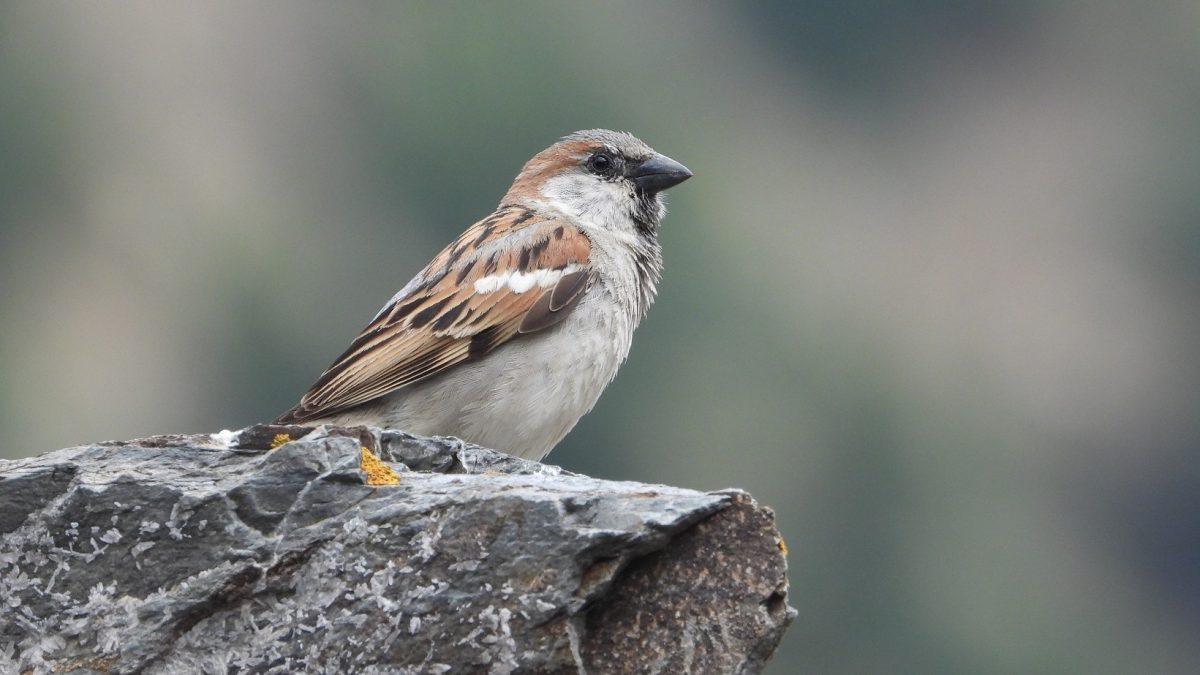A new study highlights the unique bond of house sparrows with villagers in the Indian Himalayas. What happens to sparrows that are closely associated with human activities when high-altitude villages (above 3,000 m) turn deserted when local people migrate to their winter village downhill?
Many villagers practice seasonal nomadism in Uttarakhand. Most of the summer villages, with the approach of winter, turn completely uninhabited due to extremely cold conditions and snowfall. Villagers make Malari, Niti, Gamsali, Bampa, Farkiya, Mahargaon, Kaileshpur, Jelam, Kosha, Dronagiri, Gartak, Juma, and Kaga villages in district Chamoli their home for about six months in the summer.
The Wildlife Institute of India (WII), based in Dehradun, is conducting a study on the ecology and population status of house sparrows in Uttarakhand. The study is being funded by the Uttarakhand forest department.
The initial findings have amazed wildlife scientists and researchers. They found house sparrow populations to migrate, leaving the villages when local people migrated south with the onset of winter and returned to the high-altitude villages with people returning in summer, clearly showing their love and bond with human beings.
As part of the ongoing study, researchers from WII have been marking birds for individual identification using rings or bands placed on the legs of sparrows, and close to 200 sparrows have been marked. Attempts are being made to understand the altitudinal movements of house sparrows from the high-altitude villages.
WII scientist R Suresh Kumar says, “The populations of sparrows in Uttarakhand are unique in that they occur as high as 3,500 Mts and more. There was speculation that house sparrows migrate from high altitude to lower areas, with local people abandoning their summer villages like Niti, Malari, and others. We just had a faint idea. But now we know that they migrate down with people leaving the area. In another aspect of the study, we found house sparrows of the high-altitude villages to be larger in body size as an adaptation to cold climes, compared to sparrows of lower elevations.”
Impact Shorts
More ShortsAnnually, locals move from their winter villages located from Tapovan to Karanprayag—in a stretch of about 95 km—to higher altitudes with their livestock. With the arrival of locals, from mid-May, Malari, Niti, and eleven other villages turn into a big hotspot of activities. The change in weather and movement of villagers provides their winged friends with an with an indication that it is time to fly for high-attitude villages.
Local resident Brij Bhushan from village Farkiya (Chamoli) says, “Yes, we occasionally see some flocks of house sparrows in our village, but their numbers have decreased drastically.” With a total population of less than 200 people and about 41 houses, the main occupation of Farkiya residents is agriculture and animal husbandry. The villagers migrate to their summer village with their livestock, including goats, sheep, cows, yaks, etc., to stay there for six long months. Prem Hindwal, another resident of Farkiya, says, “For the convenience of the migrating village, a post office starts operating in Bampa and remains there till mid-October.”
The study on house sparrows is being conducted in many parts of Uttarakhand. To make local people aware about sparrow conservation, nest boxes have been distributed in many places, including Purola, Rudrapur, and Haridwar.
Renu Bala, the PhD Scholar at WII, says, “This study, conducted across various parts of Uttarakhand, is creating extensive awareness among local people about the importance of house sparrow conservation. Many people are actively engaged in the effort, monitoring nest boxes installed at their homes and contributing to data collection. This initiative has highlighted the crucial need for providing adequate nesting spaces and has offered valuable insights into the population status and nesting ecology of house sparrows.”
In the coming days, a team of WII will be heading for Nelong in Uttarkashi to survey for house sparrows living there. In Nelong, only an army post exists. Similar surveys will be carried out in other high-altitude villages to assess sparrow populations and also to study how house sparrows adapt to cold climatic conditions. What do they feed on in the challenging conditions? The study lays major emphasis on the life of house sparrows in unusual places.
Now villages like Malari, Niti, Gamsali, Dronagiri, etc, have turned into major attractions for tourists. The visitors come to see the traditional cultural life of the Bhotiya tribe. The study provides the local people with a new and unique story of their bond with their winged friends to be shared with the visitors.
Views expressed in the above piece are personal and solely those of the author. They do not necessarily reflect Firstpost’s views.


)

)
)
)
)
)
)
)
)



